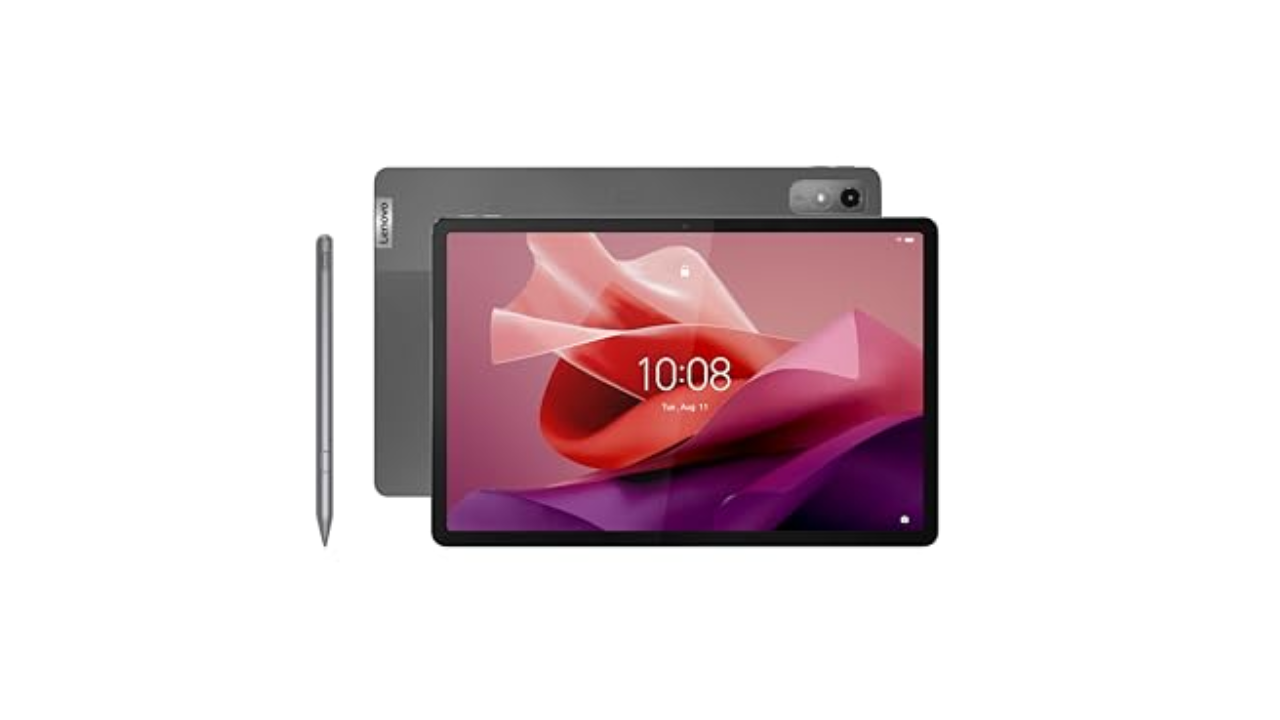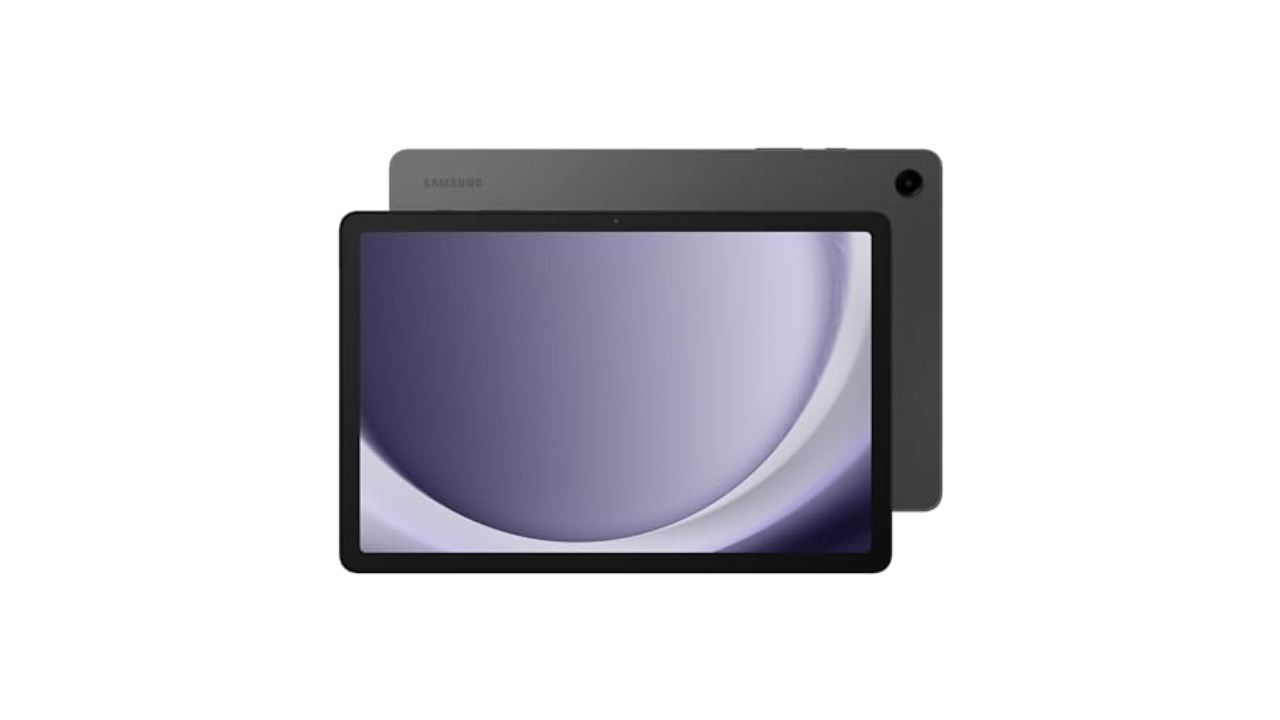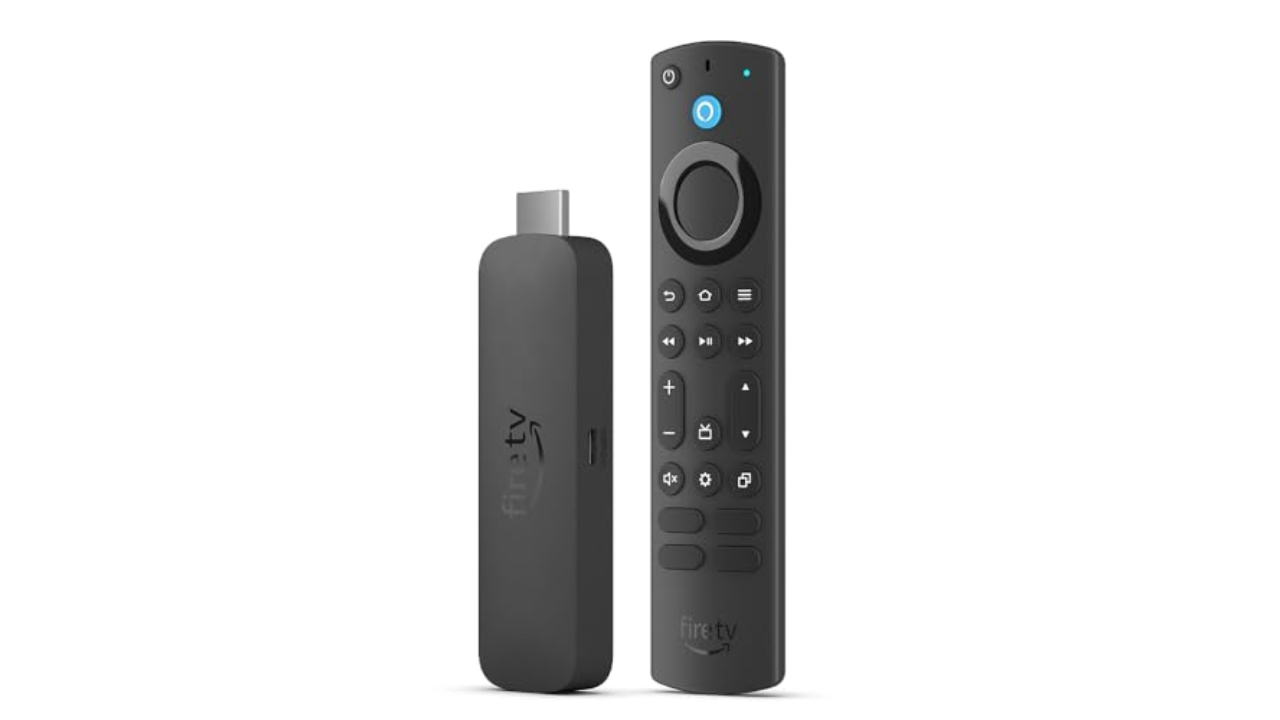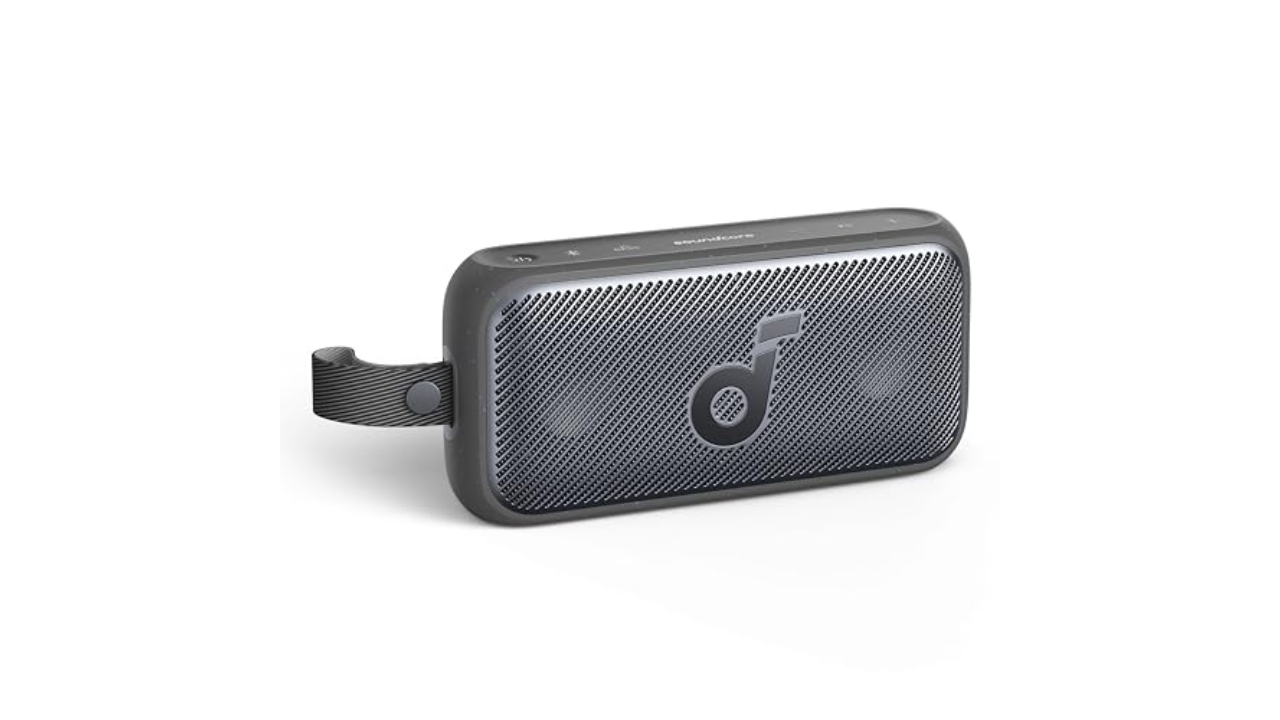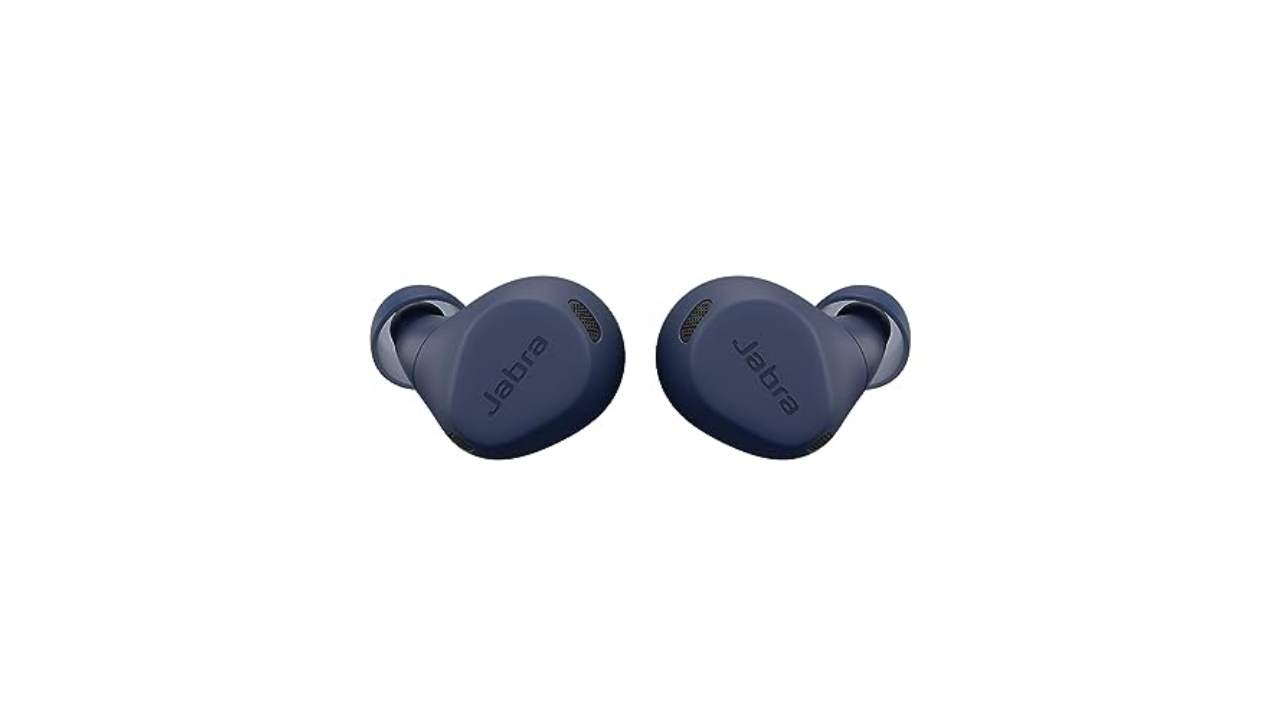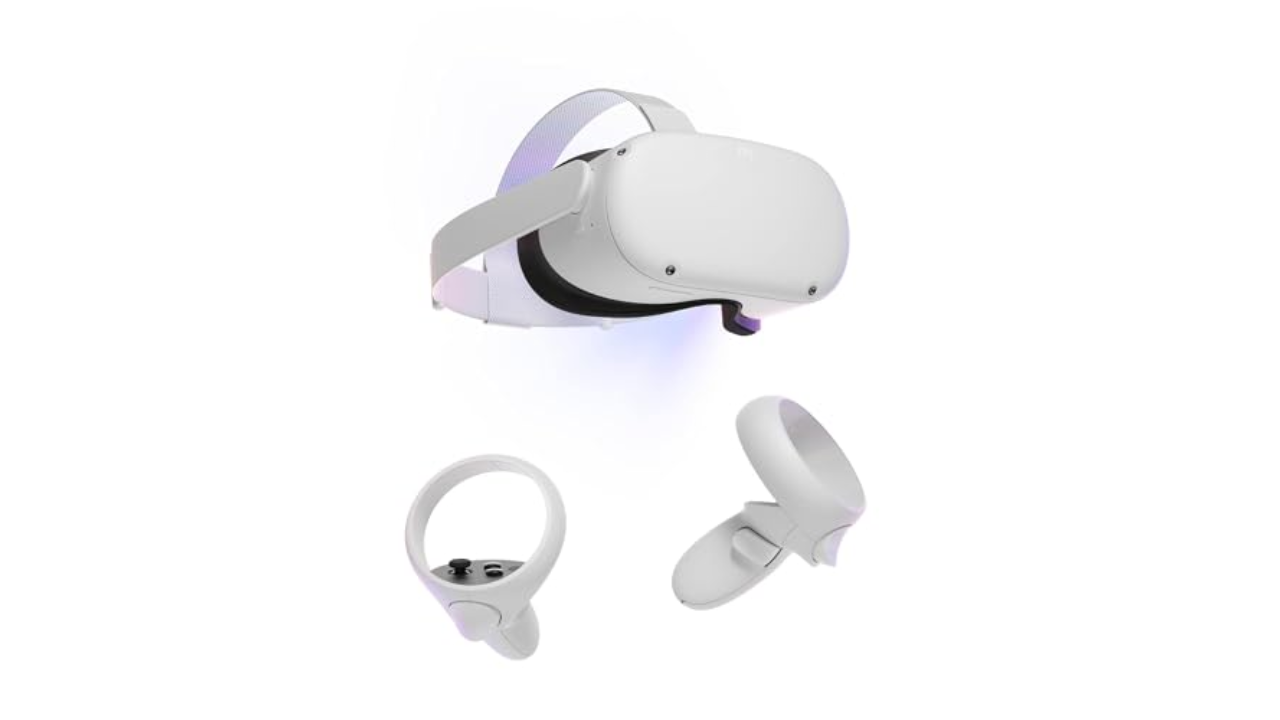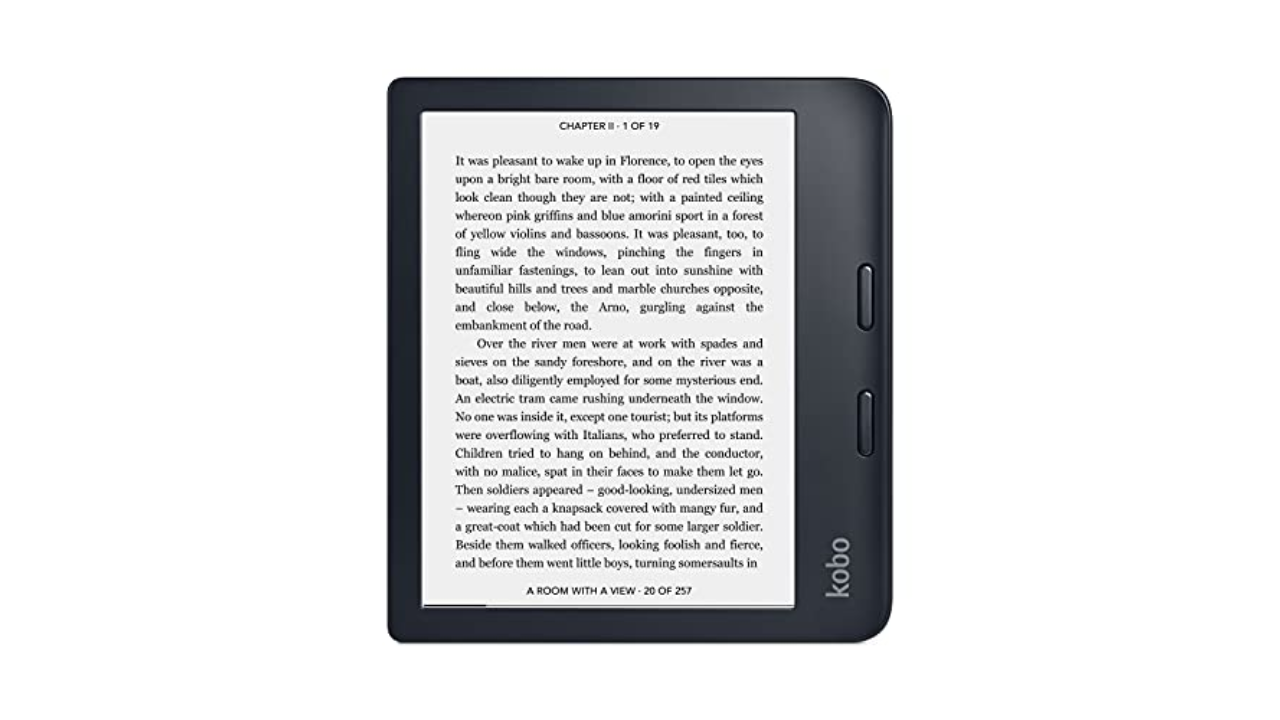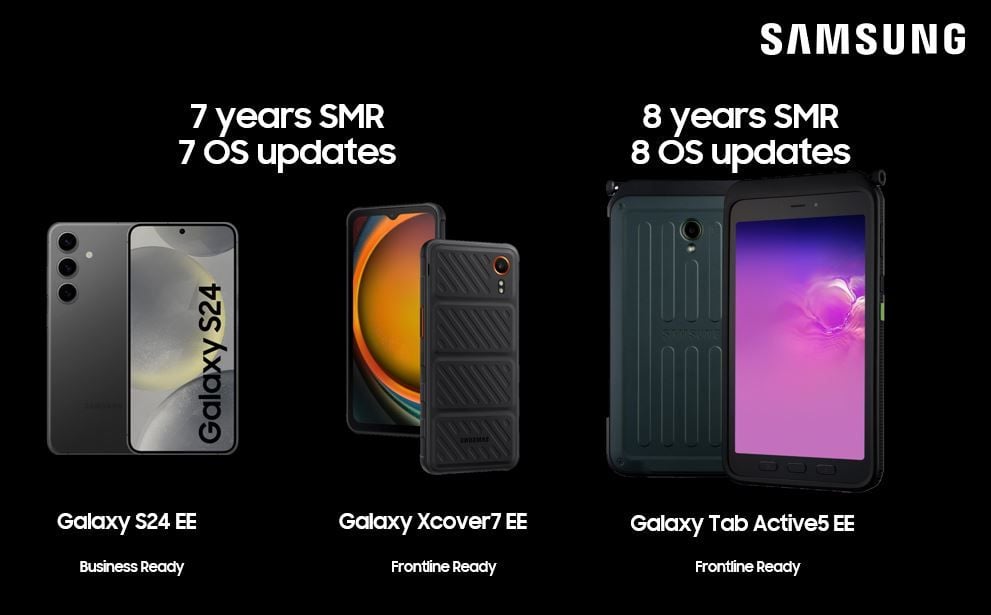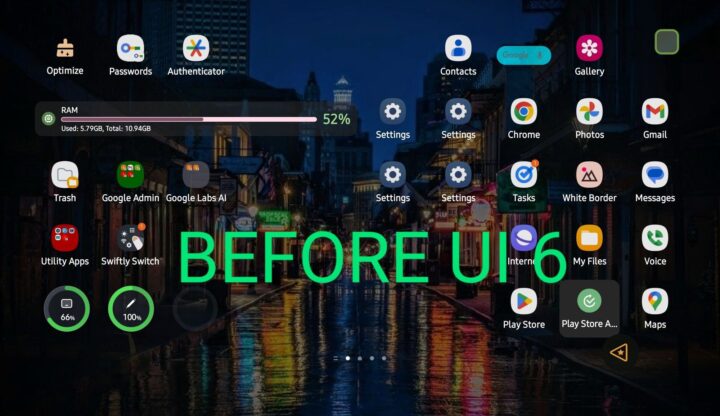[ad_1]
The new M4 iPad Pro brings big technological leaps to Apple’s high-end tablet. It packs a cutting-edge OLED display and a fast M4 chip inside the “thinnest Apple product ever.” Upgrades in the M2 iPad Air, unveiled Tuesday alongside the Pro model during Apple’s “Let Loose” event, aren’t as impressive. An in-depth M4 iPad Pro vs. M2 iPad Air comparison, however, shows that the midrange Apple tablet likely makes a better choice for many users.
So, are you confused about buying the M4 iPad Pro versus the M2 iPad Air? This comparison will help you decide.
This post contains affiliate links. Cult of Mac may earn a commission when you use our links to buy items.
M4 iPad Pro vs. M2 iPad Air: A comparison of new 2024 iPads
Apple went all out with the M4 iPad Pro, giving it the biggest upgrade since its inception. The changes are massive. And if you use your iPad Pro as a laptop replacement, you will benefit from them. But that does not mean the new M2 iPad Air is a bad choice. For one thing, it costs $400 less than the Pro, making it a much more attractive choice.
Find out the differences between the M4 iPad Pro and M2 iPad Air in our comparison below to find out which one is better for you.
Table of contents: M4 iPad Pro vs. M2 iPad Air
Design: M4 iPad Pro vs. M2 iPad Air

Photo: Apple
- M4 11-inch iPad Pro: 249.7 x 177.5 x 5.3 mm, 444 grams (Wi-Fi)/446 grams (cellular), Face ID, four-speaker audio, four studio-quality microphones
- M2 11-inch iPad Air: 247.6 x 178.5 x 6.1 mm, 462 grams (Wi-Fi)/462 grams (cellular), Touch ID, landscape stereo speakers, two microphones
- M4 13-inch iPad Pro: 281.6 x 215.5 x 5.1 mm, 579 grams (Wi-Fi)/582 grams (cellular), Face ID, four-speaker audio, four studio-quality microphones
- M2 13-inch iPad Air: 280.6 x 214.9 x 6.1 mm, 617 grams (Wi-Fi)/618 grams (cellular), Touch ID, landscape stereo speakers, two microphones
The new iPad Pro and iPad Air look practically the same as their predecessors, though there are some minor changes. The M4 iPad Pro is thinner and lighter than its predecessor. Plus, it features a redesigned camera hump, with a single rear camera, a True Tone flash and a LiDAR scanner.
You can’t tell the 2024 iPad Pro and the iPad Air apart from the front unless you look closely. The 11-inch iPad Pro is a wee bit taller and narrower than the 11-inch Air, while the 13-inch Pro is both taller and wider than the 13-inch Air. Surprisingly, despite the “Air” branding, the M4 iPad Pros are lighter and slimmer than this year’s midrange tablets.
The M4 iPad Pro has two key design advantages over the 2024 iPad Air. First, it ships with a louder four-speaker audio setup. With the Air, you get stereo landscape speakers. Second, the Pro comes with Face ID for secure authentication, while the iPad Air integrates a Touch ID sensor into its side key.
Apple offers four color options for the iPad Air, including new purple and blue shades. As for the iPad Pro, it is available in space black and silver.
From a design standpoint, there’s no single reason why you should get the Pro over the Air. That is unless you want the slimmest or lightest tablet possible. Otherwise, the 11-inch or 13-inch iPad Air won’t disappoint you.
Display: iPad Pro is the first Apple tablet with OLED

Photo: Apple
- M4 11-inch iPad Pro: 11-inch Ultra Retina XDR display, tandem OLED, ProMotion, 2420 x 1668 resolution, 1,000 nits SDR brightness, optional nano-texture glass, Apple Pencil hover support, works with Apple Pencil Pro and USB-C
- M2 11-inch iPad Air: 11-inch Liquid Retina display, 2360 x 1640 resolution, 500 nits SDR brightness, Apple Pencil hover support, works with Apple Pencil Pro and USB-C
- M4 13-inch iPad Pro: 13-inch Ultra Retina XDR display, Tandem OLED, ProMotion, 2752 x 2064 resolution, 1000 nits SDR brightness, optional Nano-texture glass, Apple Pencil hover support, works with Apple Pencil Pro and USB-C
- M2 13-inch iPad Air 13-inch Liquid Retina display, 2732 x 2048 resolution, 600 nits SDR brightness, Apple Pencil hover support, works with Apple Pencil Pro and USB-C
The display is an area where the M4 iPad Pro differs greatly from the M2 iPad Air. While there’s no screen size difference, the Pro and Air use vastly different display technologies. With the 2024 iPad Pro, you get Apple’s newest Ultra Retina XDR display. Apple calls this a “tandem OLED” panel. It comes with 120Hz ProMotion support, and can hit a claimed peak brightness of 1,600 nits when viewing HDR content. Being an OLED panel, the colors and contrast are superior to other screens, even when viewed at an 0ff angle.
While you can get the iPad Pro with an optional nano-texture glass treatment, you should avoid it. Firstly, it is only available with the 1TB or 2TB storage variants, and costs an additional $100. But more importantly, the Pro Display XDR’s nano-texture coating is delicate and requires careful maintenance. If the iPad Pro’s matte glass is similar, it is unlikely to retain its antireflective properties for long.
In comparison, the iPad Air uses a traditional LCD panel with an SDR brightness of 500 nits — 50% lower than the iPad Pro. It also lacks ProMotion support, meaning the display refreshes at a constant 60Hz.
Both tablets use a fingerprint-resistant, oleophobic and antireflective coating and support True Tone and Wide Color (P3). The panels are fully laminated to eliminate gaps between the cover glass and the display itself. And irrespective of which iPad you pick, they both support the new Apple Pencil Pro, which offers a new “squeeze” gesture and other advances.
If you are a digital creator or artist, the iPad Pro is the superior choice for your professional work. Its OLED panel is better than the iPad Air’s Liquid Retina display in every aspect. But for regular use, stick to the iPad Air, as the OLED screen won’t significantly benefit you.
Performance: Apple M4 vs. M2

Image: Apple
- M4 11-inch iPad Pro: M4 chip, 10-core CPU with three performance cores and six efficiency cores, next-gen 10-core GPU, new 16-core Neural Engine, 8 or 16GB RAM, 256GB to 2TB storage options, 8K H.264, HEVC, ProRes and ProRAW video encode/decode engine, AV1 decode
- M2 11-inch and 13-inch iPad Air: M2 chip, eight-core CPU with four performance cores and four efficiency cores, 10-core GPU, 16-core Neural Engine, 8GB RAM, 128GB to 1TB storage options, H.264 and HEVC video encode/decode engine
Performance is another area where the iPad Pro packs a big advantage over the iPad Air. The 2024 iPad Pro features Apple’s fastest chip yet, the M4. Based on TSMC’s second-gen 3nm node, Apple says the M4 packs 28 billion transistors. It sports next-generation CPU cores with improved branch prediction and wider decode and execution engines. Apple claims the M4’s CPU is 1.5x faster than the M2.
By comparison, the 2024 iPad Air uses the M2 chip fabricated on the second-gen 5nm node.
The M4’s GPU performance improvements are even more significant. Compared to the M2, the M4’s 10-core GPU supports hardware-accelerated ray tracing and mesh shading. Apple says this boosts rendering performance in apps and games by up to 4x. Professionals will benefit from the M4’s more powerful 8K video encode/decode engine, which supports ProRes and ProRAW. For more efficient video streaming, the 2024 iPad Pro adds a dedicated AV1 decoder.
Power efficiency is also better for the 2024 iPad Pro. “M4 can deliver the same performance as M2 using just half the power,” says Apple’s press release. You can get the M4 iPad Pro with up to 2TB storage. The 1TB and 2TB models add another performance boost: They ship with a whopping 16GB RAM.
For heavy video editing or production work, the iPad Pro’s M4 chip can come in handy. Otherwise, the iPad Air and its M2 SoC will serve you just fine.
Camera: Apple downgraded the iPad Pro

Photo: Apple
- M4 11-inch and 13-inch iPad Pro: 12MP Wide camera, f/1.8 aperture, Smart HDR 4, 4K60fps recording, ProRes at 4K30fps, Audio Zoom, LiDAR, Adaptive True Tone Flash; Front – 12MP Landscape Ultra Wide TrueDepth camera, f/2.4 aperture, Center Stage, Retina Flash with True Tone
- M2 11-inch and 13-inch iPad Air: Rear – 12MP Wide camera, f/1.8 aperture, Smart HDR 4, 4K60fps recording; Front – 12MP Landscape Ultra Wide camera, f/2.4 aperture, Center Stage, Retina Flash
To be honest, you should not use any iPad for taking pictures or shooting videos. But if you need it for professional work, the M4 iPad Pro should be your pick. The tablet supports ProRes recording, with LiDAR and Adaptive True Tone Flash helping in low-light scenarios. The result won’t be as good as the newest iPhone, but it should work in a pinch.
If you don’t care about the cameras, the M2 iPad Air’s 12MP rear camera should work just fine. It misses out on ProRes recording and Audio Zoom, but you are unlikely to use these features much anyway.
At the front, the M2 iPad Air and M4 iPad Pro both sport a 12MP Ultra Wide camera in landscape orientation. It supports Center Stage, ensuring you are always in focus on video calls.
Connectivity
- M4 iPad Pro: Wi-Fi 6E, MIMO, Bluetooth 5.3, 5G, Gigabit LTE (up to 31 bands), Thunderbolt/USB 4, eSIM, Smart Connector
- M2 iPad Air: Wi-Fi 6E, MIMO, Bluetooth 5.3, 5G, Gigabit LTE (up to 31 bands), USB-C, eSIM, Smart Connector
The new iPads support all the connectivity standards you can ask for: Wi-Fi 6E, 5G and Smart Connector. They do lack an Ultra Wideband chip, so you cannot get Precision Finding in the Find My app. The only difference is that the iPad Pro supports Thunderbolt 4. So, you can transfer data at up to 40Gbps speeds or connect high-bandwidth accessories to the tablet. In comparison, the iPad Air’s USB-C port tops out at 10Gbps speeds.
Battery life
- M4 11-inch and 13-inch iPad Pro: Up to 10 hours of video playback or Wi-Fi surfing, nine hours of web surfing on mobile data
- M2 11-inch and 13-inch iPad Air: Up to 10 hours of video playback or Wi-Fi surfing, nine hours of web surfing on mobile data
Despite the size, screen and chip differences, Apple says the M2 iPad Air and M4 iPad Pro lineups offer the same battery life. All tablets will provide up to 10 hours of video playback or Wi-Fi surfing. There could be some real-world differences, but that will only be clear in a few weeks.
Price: M4 iPad Pro vs. M2 iPad Air

Photo: Apple
- M4 11-inch iPad Pro: Starts at $999 (Wi-Fi) or $1,199 (cellular)
- M2 11-inch iPad Air: Starts at $599 (Wi-Fi) or $749 (cellular)
- M4 13-inch iPad Pro: Starts at $1,299 (Wi-Fi) or $1,499 (cellular)
- M2 13-inch iPad Air Starts at $799 (Wi-Fi) or $949 (cellular)
The M4 iPad Pro is definitely a superior tablet, packing a cutting-edge display and SoC into a super-slim package. But this cutting-edge technology comes at a cost, with prices starting at $999. That’s a staggering $400 more than the M2 11-inch iPad Air. And if you want the 13-inch model, be prepared to spend $1,300 — $500 more than the 13-inch iPad Air. The price gap will further increase if you opt for a higher storage tier of the iPad Pro or the nano-texture glass.
The M2 iPad Air offers a better price-to-performance ratio. The 11-inch model starts at a reasonable $599, while the 13-inch model starts at $799. Since the base storage is now 128GB, most users won’t need to upgrade to a higher storage tier.
M4 iPad Pro vs. M2 iPad Air: Which 2024 iPad should you buy?
If you have the money or your workflow can justify the iPad Pro’s superior hardware, the pro tablet is a no-brainer. But remember that the M2 iPad Air and M4 iPad Pro both run the same iPadOS build. So, you won’t get any additional features by buying the Pro model; you only get extra horsepower and a better display. (This could change with iPadOS 18, as Apple might make some AI features exclusive to the M4 iPad Pro.)
For average users, though, the iPad Air is the smarter choice. It will deliver the same experience as the M4 iPad Pro while saving you hundreds of dollars. You can use that money to buy some useful iPad accessories, like the Apple Pencil Pro, AppleCare+ or unique cases.
M4 iPad Pro
Buy from: Amazon
M2 iPad Air
Buy from: Amazon
[ad_2]
Source Article Link



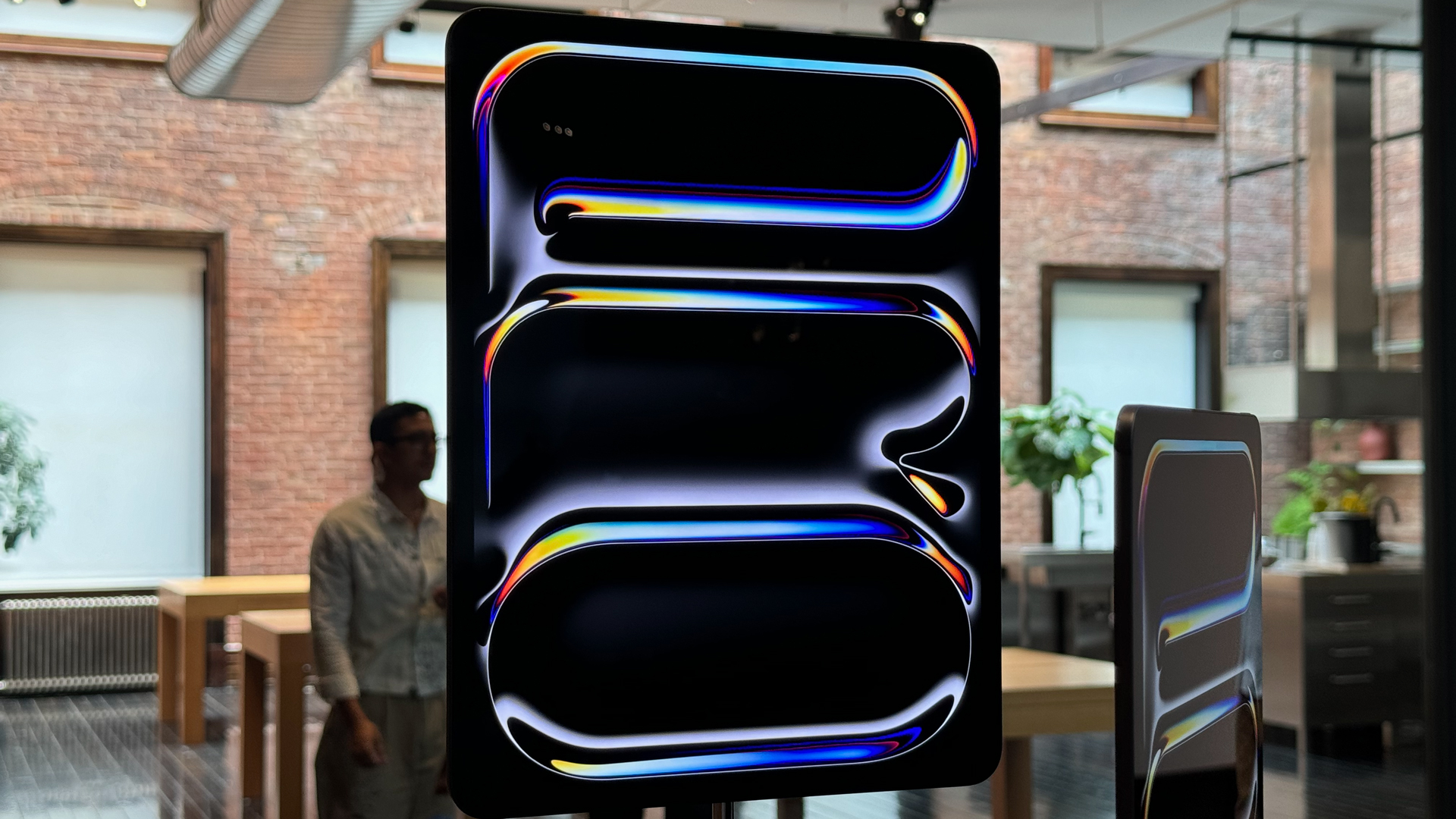


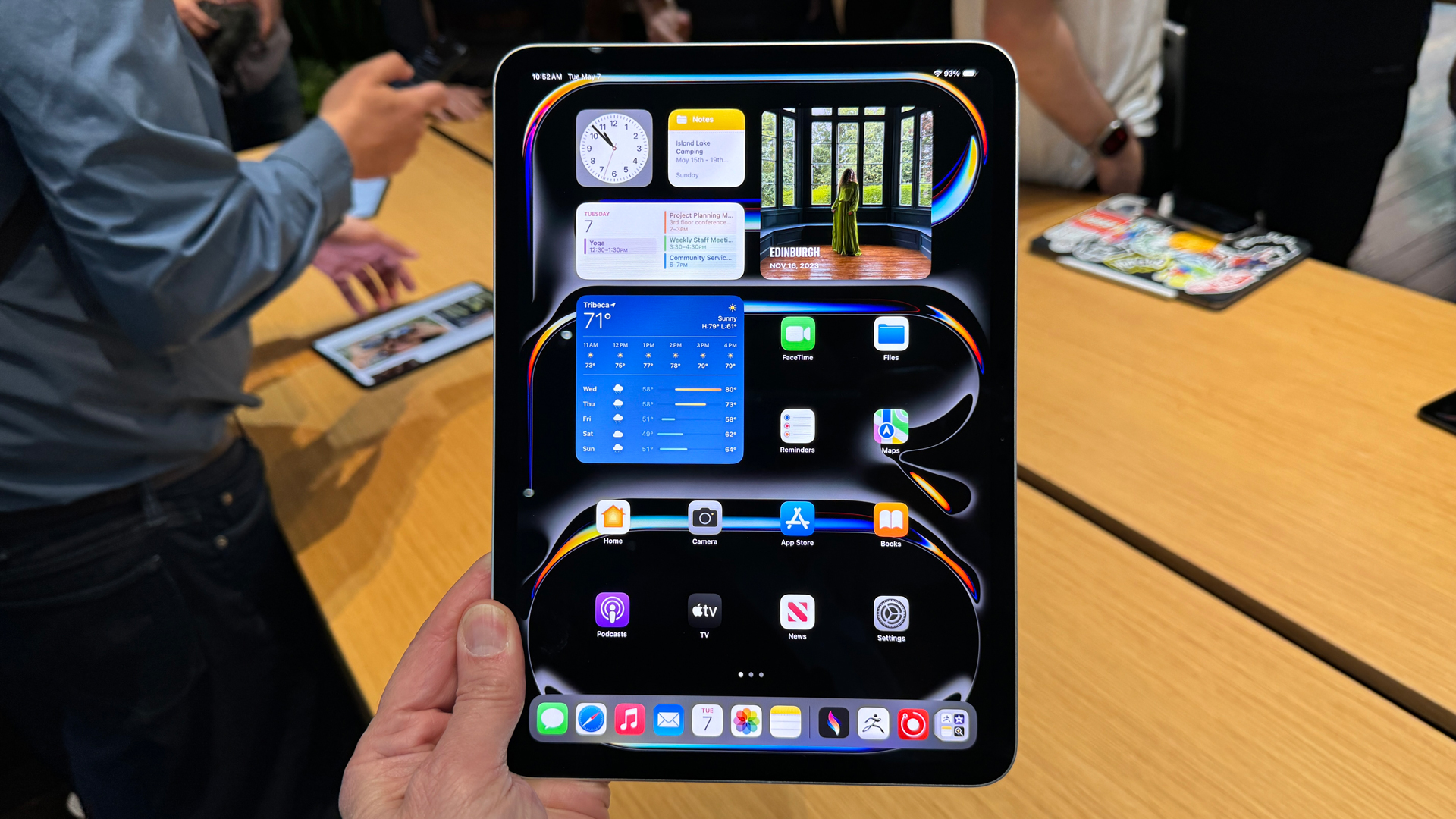

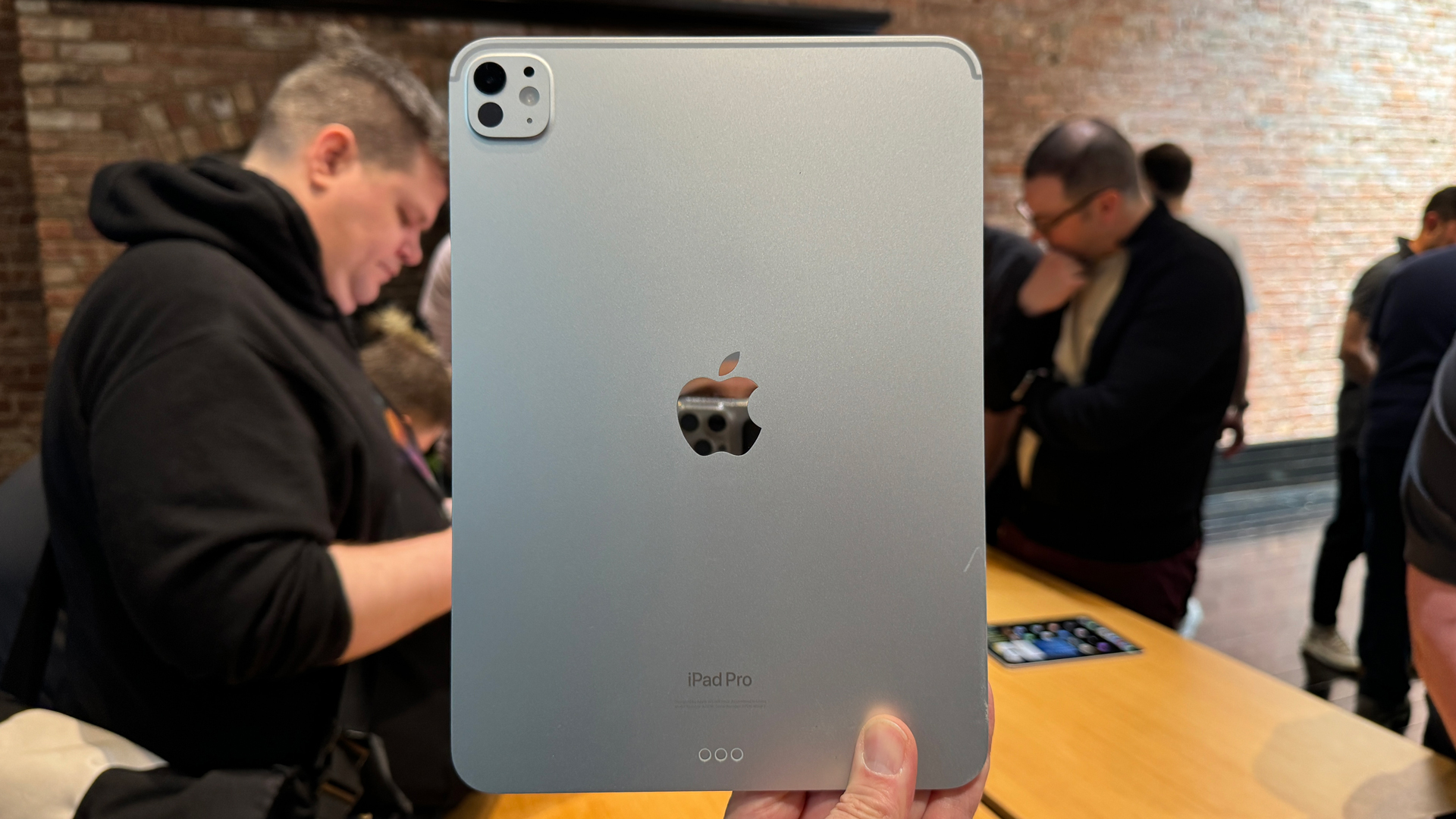
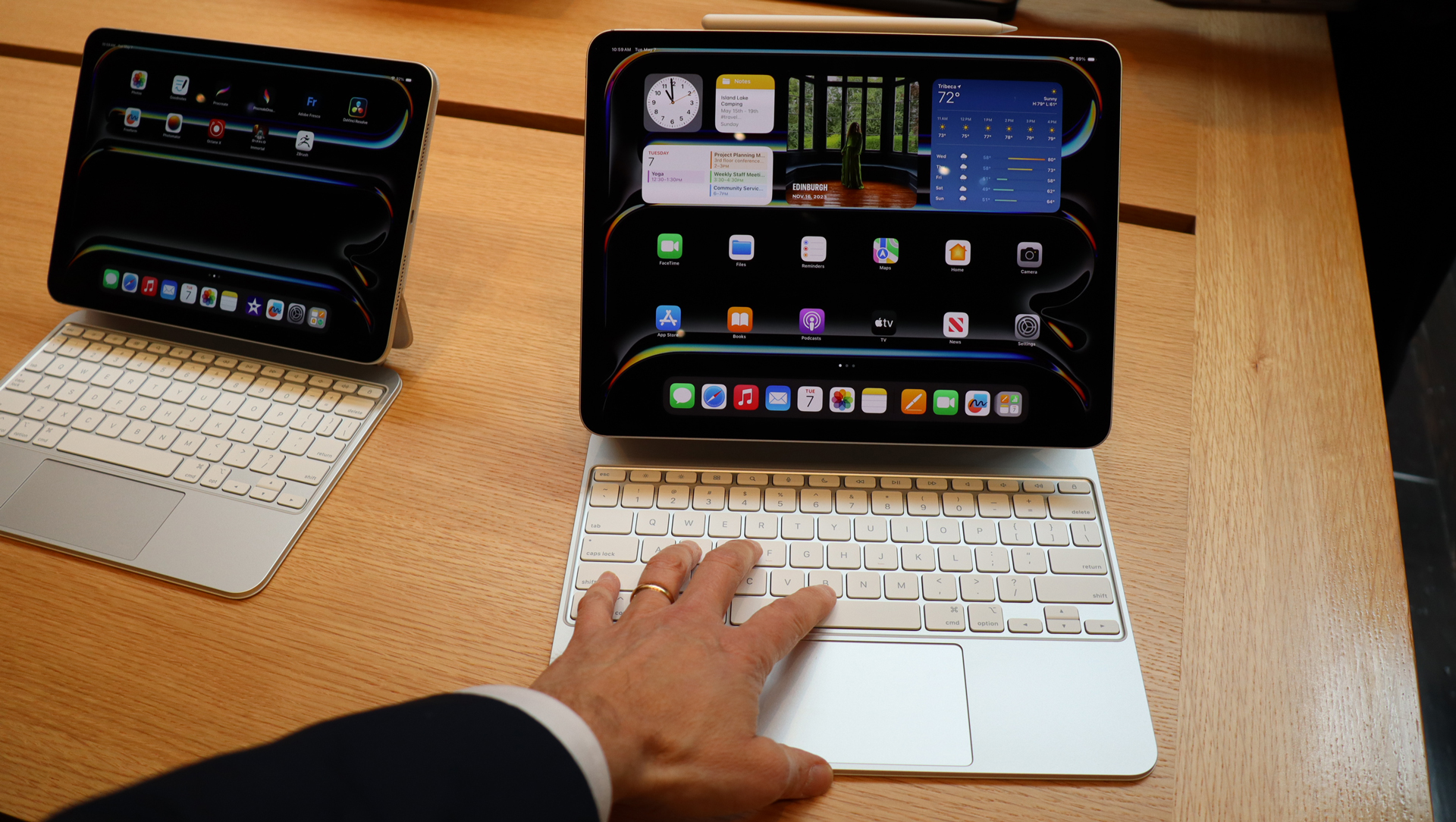
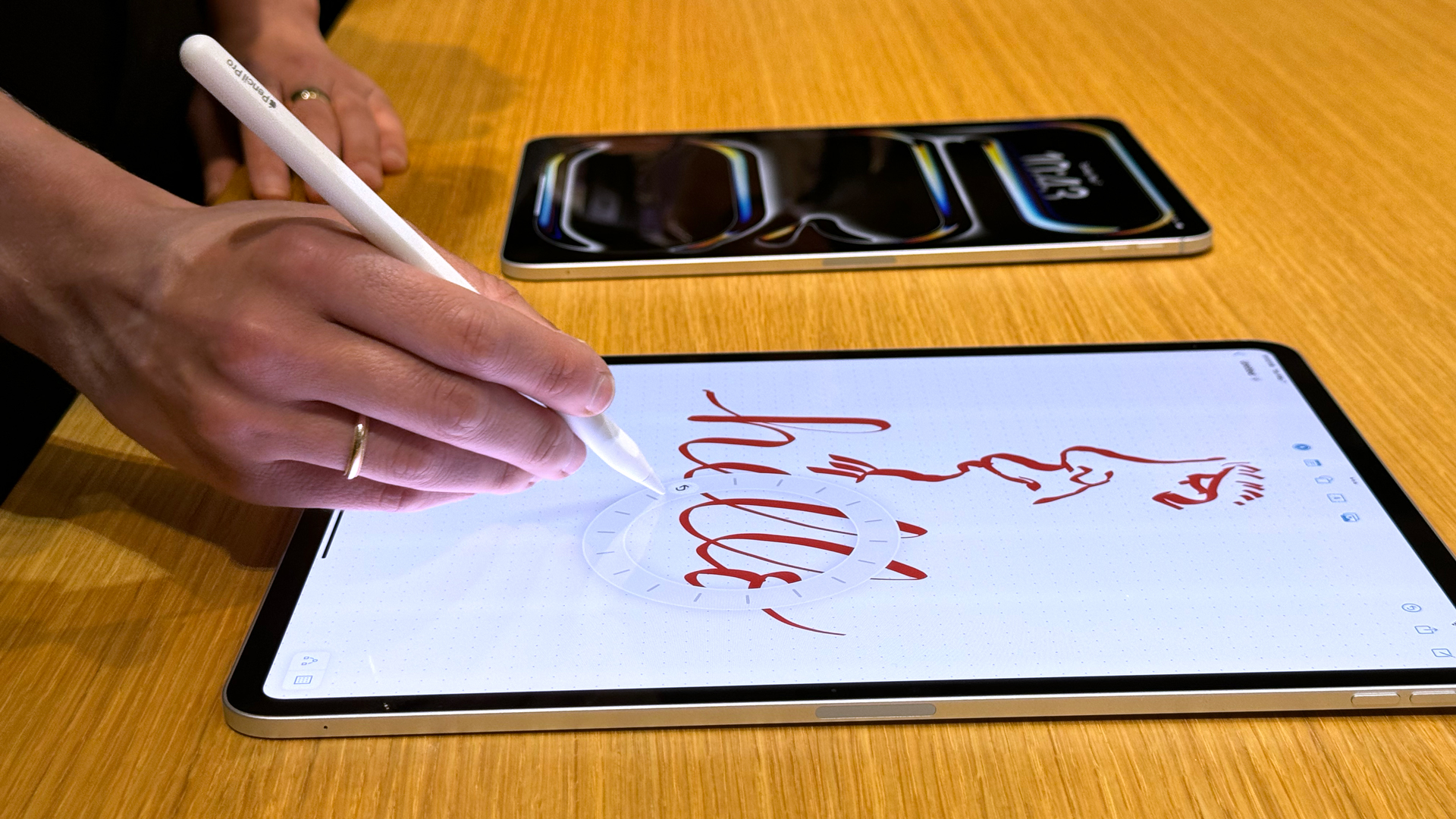
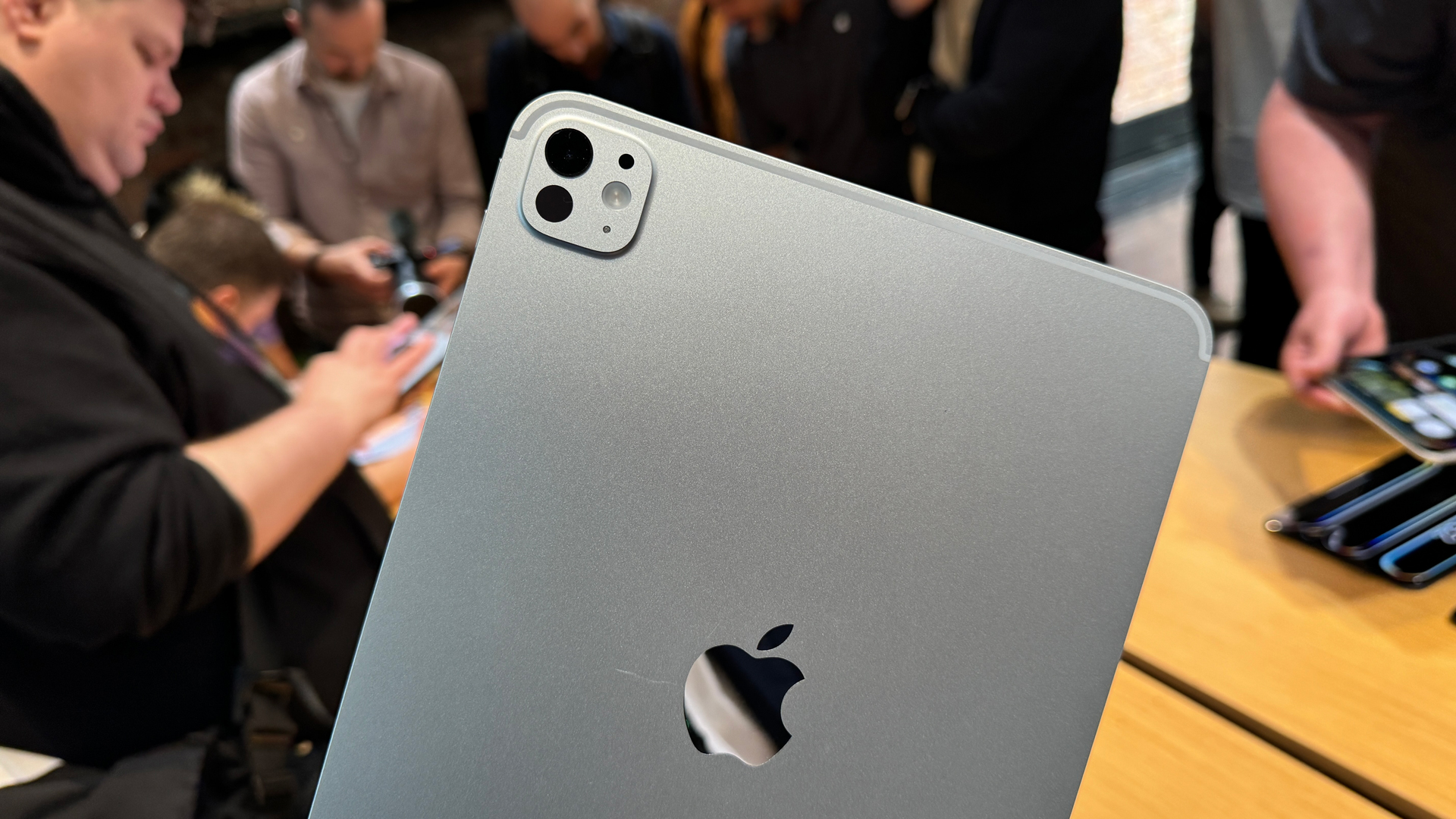

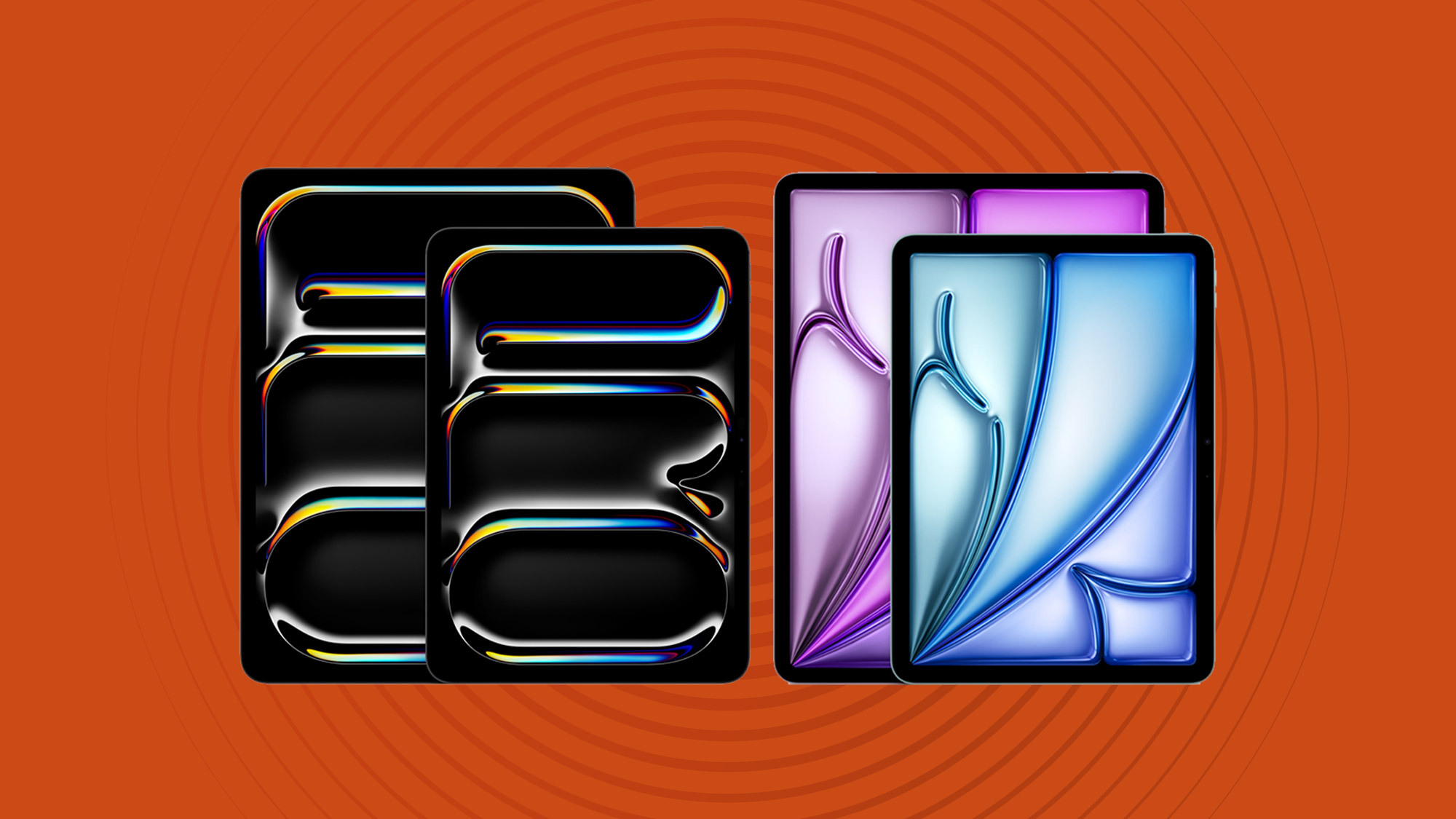

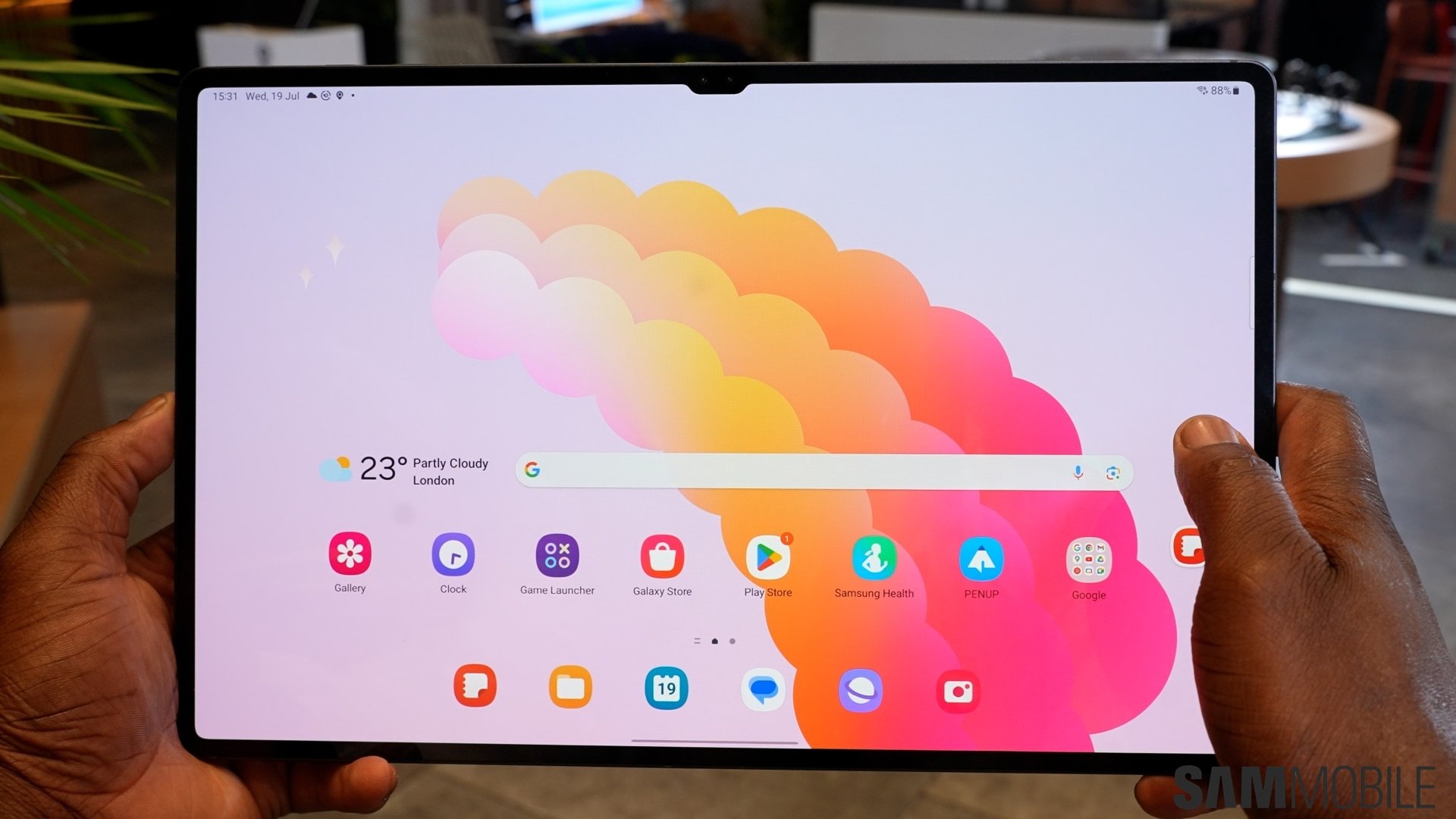
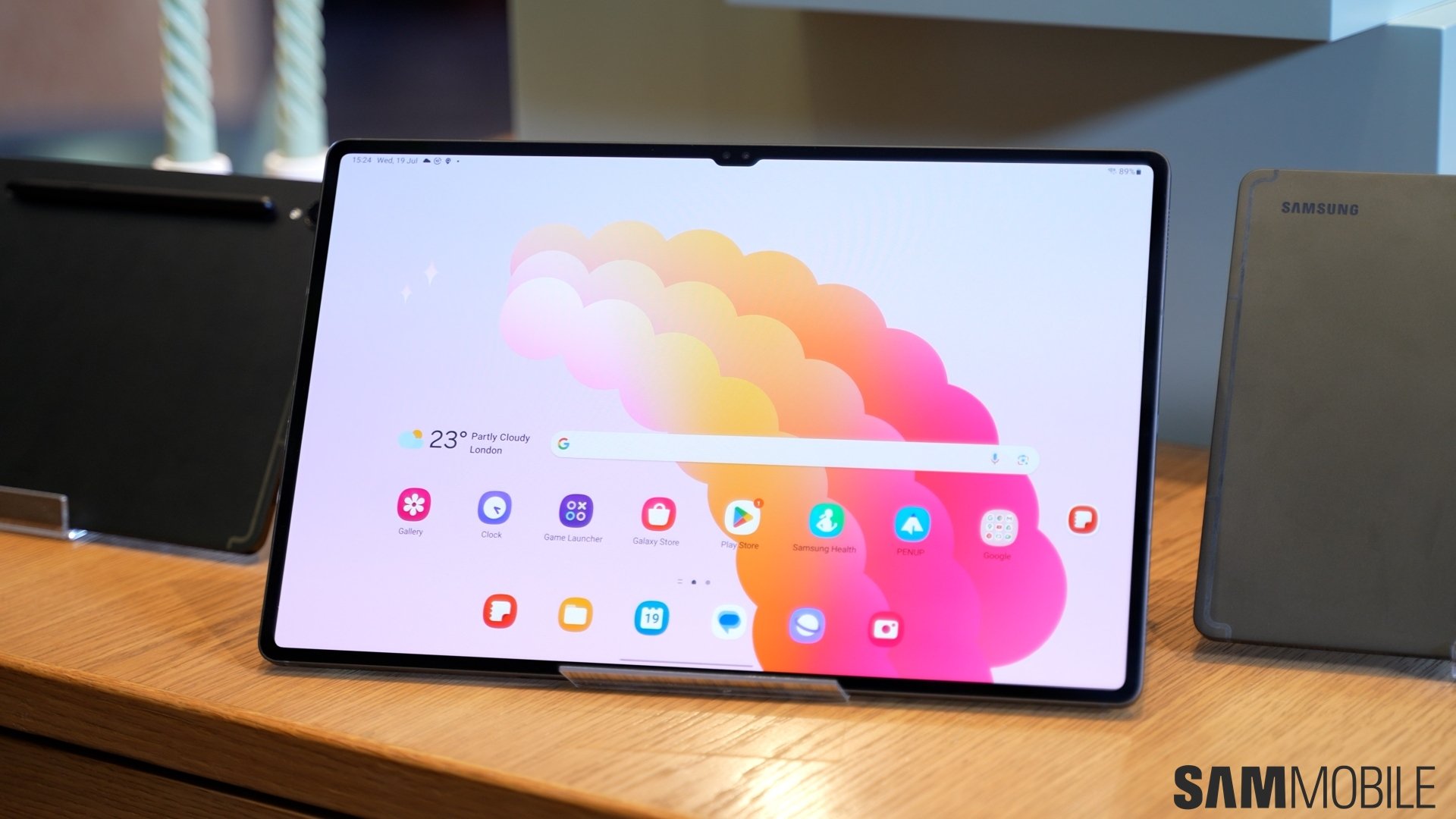
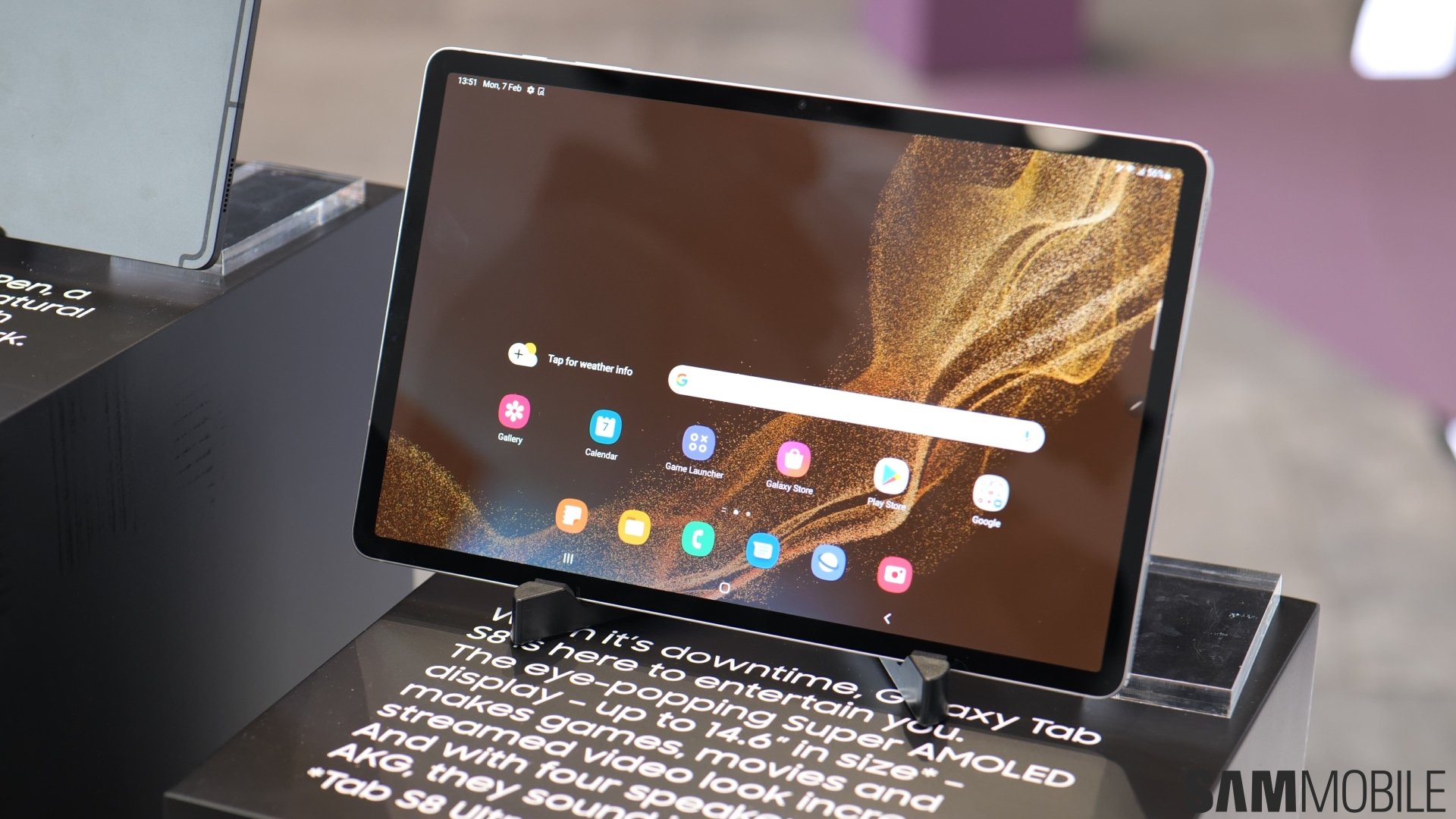
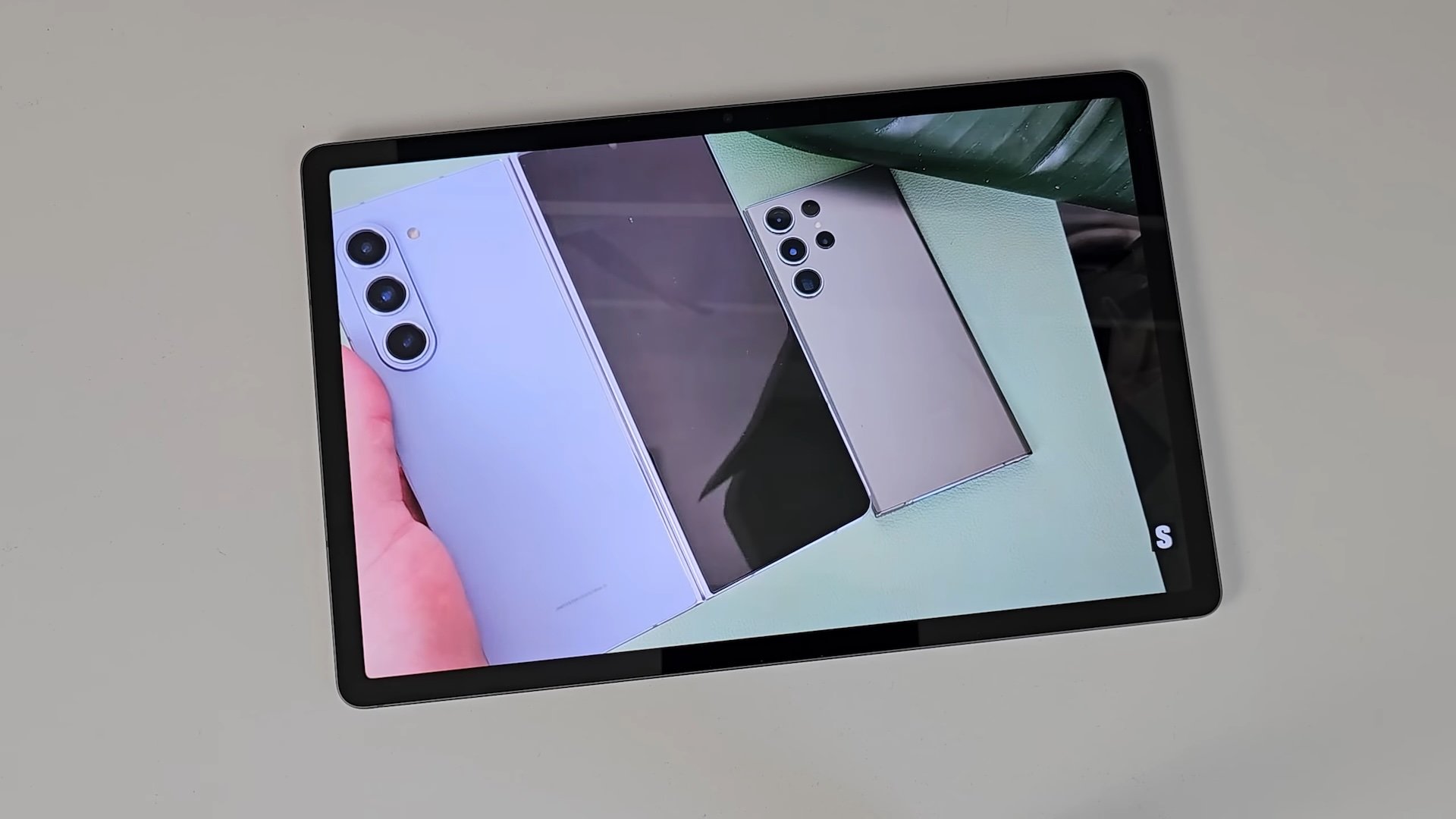
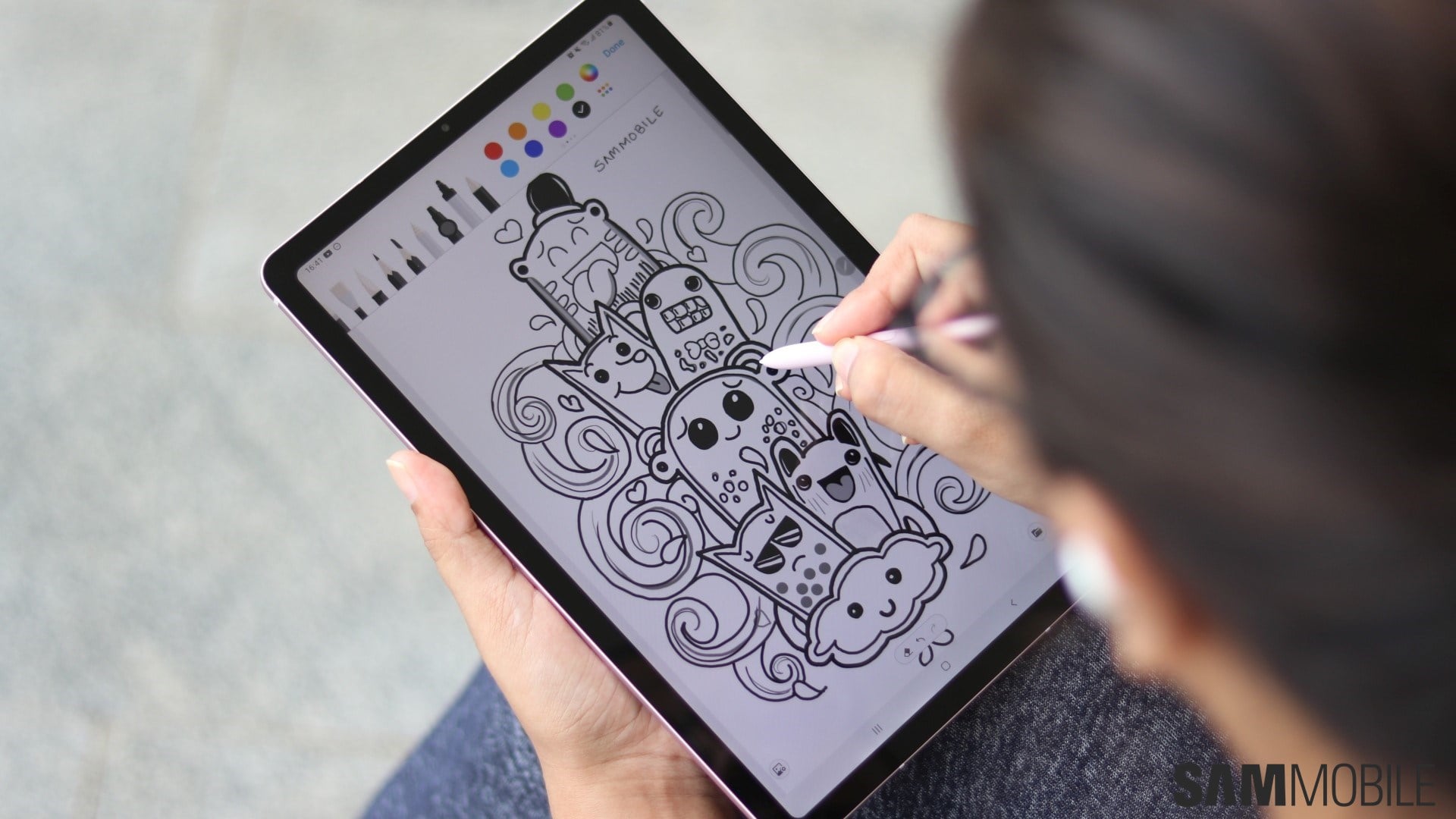

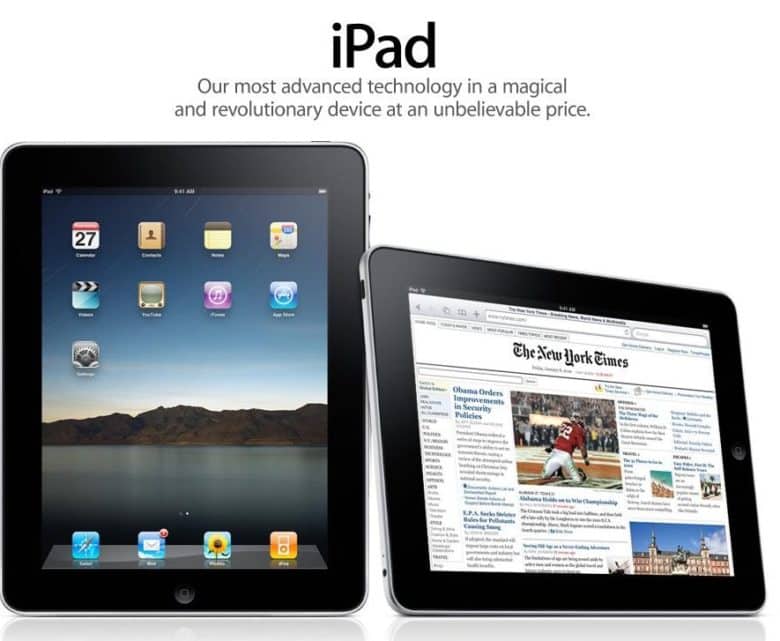
 April 30, 2010: Almost a month after the first-gen iPad went on sale, the first Wi-Fi + 3G iPads arrive in the hands of U.S. customers.
April 30, 2010: Almost a month after the first-gen iPad went on sale, the first Wi-Fi + 3G iPads arrive in the hands of U.S. customers.